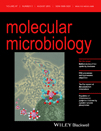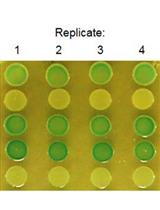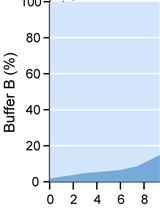- EN - English
- CN - 中文
Identification and Characterization of Bacterial Chemoreceptors Using Quantitative Capillary and Gradient Plate Chemotaxis Assays
使用量化毛细管和梯度平板趋化性试验法进行细菌化学受体的识别和特性描述
发布: 2016年04月20日第6卷第8期 DOI: 10.21769/BioProtoc.1789 浏览次数: 12701
评审: Valentine V TrotterSeda EkiciAmit Dey
Abstract
Bacterial chemotaxis is a motility-based response that biases cell movement toward beneficial molecules, called attractants, and away from harmful molecules, also known as repellents. Since the species of the genus Pseudomonas are characterized by a metabolic versatility, these bacteria have developed chemotactic behaviors towards a wide range of different compounds. The specificity of a chemotactic response is determined by the chemoreceptor, which is at the beginning of the signaling cascade and which receives the signal input. The basic elements of a typical chemoreceptor are the periplasmic ligand binding domain (LBD), responsible for sensing environmental stimuli, and the cytosolic methyl-accepting (MA) domain, that interacts with other components of the cellular signaling cascade. Escherichia coli (E. coli), the traditional model in chemotaxis research, has 5 well-characterized chemoreceptors. However, genome sequence analyses have revealed that many other bacteria possess many more chemoreceptors, some of which with partially overlapping signal profiles. This high number of chemoreceptors complicates their study by the analysis of single chemoreceptor mutants. We have pursued an alternative strategy for chemoreceptor characterization which corresponds to the generation of chimeric receptors composed of the LBD of the chemoreceptor under investigation and the MA domain of an E. coli receptor (Tar). The chimer is then introduced into a chemoreceptor free mutant of E. coli and the chemotaxis of the resulting strain is entirely due to the action of this chimeric receptor. In this publication we describe the use of quantitative capillary and gradient plate assays to study Pseudomonas chemotaxis as well as E. coli strains harboring chimeric receptors.
Keywords: Chemotaxis capillary assays (趋化性毛细管法)Materials and Reagents
- Materials
- SterilinTM Standard 90 mm Petri Dishes (Thermo Fisher Scientific, catalog number: 101/IRR )
- Microtest plate 96-well, F (SARSTEDT AG & Co, catalog number: 82.1581.501 )
- 1.5 ml Eppendorf tubes
- Square petri dishes (120 mm x 120 mm) with grid (Greiner Bio-One GmbH, catalog number: 688102 )
- Capillaries (Sigma-Aldrich, Drummond Microcaps®, catalog number: P1424 )
- Bulb for Pasteur pipette
- Erlenmeyer flasks 100 ml
- SterilinTM Standard 90 mm Petri Dishes (Thermo Fisher Scientific, catalog number: 101/IRR )
- Strains
- P. aeruginosa PAO1 (Stover et al., 2000)
- E. coli HD49 (Reyes-Darias et al., 2015a), chemoreceptor free strain E. coli UU1250 (Ames et al., 2002) harboring a plasmid encoding a chimeric receptor comprising the LBD of the PctC chemoreceptor of P. aeruginosa PAO1 (Taguchi et al., 1997; Rico-Jimenez et al., 2013) and the MA domain of the E. coli Tar receptor.
- P. aeruginosa PAO1 (Stover et al., 2000)
- Reagents
- HEPES sodium salt (Sigma-Aldrich, catalog number: H7006 )
- Potassium phosphate dibasic (HK2PO4) (Sigma-Aldrich, catalog number: P3786 )
- Sodium salicylate (Sigma-Aldrich, catalog number: S3007 )
- Chloramphenicol (Sigma-Aldrich, catalog number: C-0378 )
- Potassium phosphate monobasic (H2KPO4) (Sigma-Aldrich, catalog number: 60220 )
- Ammonium sulfate [(NH4)2SO4] (Merck Millipore Corporation, catalog number: 1.01217 )
- Sodium citrate tribasic dihydrate (Sigma-Aldrich, catalog number: C7254 )
- Magnesium sulfate heptahydrate (MgSO4.7H2O) (Sigma-Aldrich, catalog number: 63140 )
- Thiamine hydrochloride (Thiamine HCl) (Sigma-Aldrich, catalog number: 47858 )
- Glycerol (Scharlab, S.L., catalog number: GL0027005P )
- L-threonine (Sigma-Aldrich, Fluka, catalog number: 89179 )
- L-methionine (Sigma-Aldrich, catalog number: M9625 )
- L-leucine (Merck Millipore Corporation, catalog number: 5360 )
Note: Currently, it is “Merck Millipore Corporation, catalog number: 105360 ”. - L-histidine (Sigma-Aldrich, catalog number: 153688 )
- γ-Aminobutyric acid (GABA) (Sigma-Aldrich, catalog number: A2129 )
- Bacto-Agar (BD, DifcoTM, catalog number: 281230 )
- Sodium chloride (NaCl) (Sigma-Aldrich, catalog number: S9888 )
- Tryptone Broth (TB) medium (see Recipes)
- 0.9% NaCl solution (see Recipes)
- LB medium (see Recipes)
- 5x minimal A salts (see Recipes)
- 5 mg/ml Aminoacid-mix (see Recipes)
- Minimal A gradient plate medium (see Recipes)
- HEPES sodium salt (Sigma-Aldrich, catalog number: H7006 )
Equipment
- Spectrophotometer (Perkin Elmer, model: uv/vis lambda 20 )
- Incubators (30 °C and 37 °C) (Thermo Fisher Scientific, Heraeus, model: B6060 incubator)
- Orbital shaker incubator SH maxi (Controltécnica Instruments)
- Centrifuge Allegra X-22R (Beckman Coulter)
- pH meter GLP22 (HACH LANGE SPAIN, Crison)
- Bunsen burner
- Two pairs of tweezers
- Bulb dispenser (Drummond Scientific Company, catalog number: 1-000-9000 )
Procedure
文章信息
版权信息
© 2016 The Authors; exclusive licensee Bio-protocol LLC.
如何引用
Reyes-Darias, J. A., García, V., Rico-Jiménez, M., Corral-Lugo, A. and Krell, T. (2016). Identification and Characterization of Bacterial Chemoreceptors Using Quantitative Capillary and Gradient Plate Chemotaxis Assays. Bio-protocol 6(8): e1789. DOI: 10.21769/BioProtoc.1789.
分类
微生物学 > 微生物细胞生物学 > 基于细胞的分析方法
微生物学 > 微生物信号传导 > 感知受体
您对这篇实验方法有问题吗?
在此处发布您的问题,我们将邀请本文作者来回答。同时,我们会将您的问题发布到Bio-protocol Exchange,以便寻求社区成员的帮助。
Share
Bluesky
X
Copy link


















